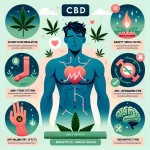Upon hearing the words “sexual dysfunction,” most people’s minds go straight to penises. From erectile problems to premature ejaculation, male disorders overwhelm the common canon of sexual function. Men plagued with these problems can find themselves feeling emasculated as the butt of cruel jokes, but there’s a wealth of existing knowledge and treatment methods. Unfortunately, for women struggling with arousal and orgasm, research remains far scarcer and more obscure, and treatment tends to appear impossible.
The first thing to realize about sexual dysfunction is just how common it really is. Nearly a third of men report some degree of difficulty, as do 41% of women. The phenomenon manifests in a variety of disorders classified as a “problem occurring during any phase of the sexual response cycle that prevents … satisfaction from the sexual activity.” What is the sexual response cycle? According to science, it includes several terms that toe the line between saucy and downright unsexy: desire (libido), excitement (arousal), orgasm and resolution.
While not all phases occur in every intimate encounter, the cycle describes the average experience. You get horny, you seek stimulation, you hopefully come and then you get to deal with any fun consequences. Excluding asexual people, when someone struggles to move through the phases, they’re a likely candidate for sexual dysfunction. Symptoms for both men and women include loss of interest in sex, absence of arousal, inability to orgasm and pain during intercourse.
For those with male reproductive organs, sexual dysfunction is both easily identifiable and easily treated. Most people know about premature ejaculation and erectile dysfunction, even if they’ve never had personal experience with it themselves or with their partners. Male impotence has remained a punchline in popular culture for centuries, from Shakespeare to Adam Sandler movies. Otherwise it’s painted as a personal failing — something that revokes a man’s “manhood.”
Scientists have clocked in countless hours working toward men’s sexual satisfaction. Just consult the many handy pills on the market to combat a flagging staff: tried-and-true Viagra, Levitra, Staxyn, Cialis, Stendra, etc. Or the countless condoms specialized to reduce stimulation to prevent an early ending. Let’s not forget about the common cultural knowledge of the old “masturbate before sex” adage to last longer.
But for those with vaginas, sexual dysfunction is so rarely talked about that it usually takes months to years to realize that a diagnosable and treatable problem even exists. A study published by the National Center for Biotechnology Information (NCBI) regarding “female sexual dysfunction (FSD)” surmises the minimal current knowledge and treatment methods. Underscoring the study was their intention to fill in the gap of knowledge between men and women.
FSD can manifest as pain or discomfort during intercourse, vaginal dryness and difficulty orgasming. In some cases, women suffer from vaginismus, which involves involuntary spasms of vaginal muscles. Dyspareunia is a more general term for a wide range of penetrative pain. These disorders can make any form of penetration excruciating and often impossible. When a problem with arousal exists, the vagina can’t provide enough lubrication during intercourse, which also causes discomfort. Otherwise and often at the same time, women struggle with moving past the pleasure plateau to achieve orgasm.
In both men and women, sexual dysfunction has numerous causes, physical and psychological. Diabetes, heart disease, hormonal imbalances, neurological disorders, alcohol or drug abuse, medications like antidepressants, excessive stress and anxiety, depression, insecurity about performance or body image and the aftereffects of sexual trauma can all spur sexual dysfunction. But treating it is a far less egalitarian process than causing it.
Treatment options for FSD are out there, but they do a great job of eluding most sufferers. Curing underlying causes can solve the issue for many; changing antidepressants and undergoing sex therapy or regular therapy can knock out even more cases. For those with vaginismus or other pain disorders, pelvic floor therapy can grant control over spasming muscles and dilators can slowly accustom the vagina to stretching.
Unfortunately, few women seek medical help, whether out of ignorance or fear. Many believe their cases to be hopeless, accepting unsatisfactory and even painful sex lives as the norm; others avoid it altogether. Moreover, social stigma shaming female sexuality makes open discussion of it taboo. What’s more, for disorders with broad, vague names, diagnoses can be difficult to both discover and to understand. Wordy and full of jargon, hypoactive sexual desire disorder, noncoital sexual pain disorder and female sexual arousal disorder fail to effectively convey information in the way erectile dysfunction does.
Sexual dysfunction affects more women than men, but their problems receive only a small fraction of attention from researchers. As the NCBI study relates, FSD patients have historically just been assigned a therapist as primary treatment. Only recently has research explored potential biological roots of several female sex disorders, opening the doors to future treatments that can finally grant millions of women sexual satisfaction.
Why do we seem to care more about men’s sexual pleasure than women’s? Perhaps it’s a fixation on the false dichotomy painting men as inherently more sexual than women. Or, more generally, a symptom of patriarchal customs shoving women out of the public sphere and only studying men. A remnant of a more blatantly sexist era that shamed women for enjoying sex, especially (gasp) fornication? All the above provide pieces of the sociological puzzle concealing knowledge of female sexual dysfunction from the public.
Living with sexual dysfunction is stressful enough on its own, but adding the female sex to the equation only multiplies anxieties about speaking up or seeking treatment. Many treatments remain little more than experimental, and few are as easy as knocking back a little blue pill. It’s time to start prioritizing female pleasure — less faking it, more making it.
















